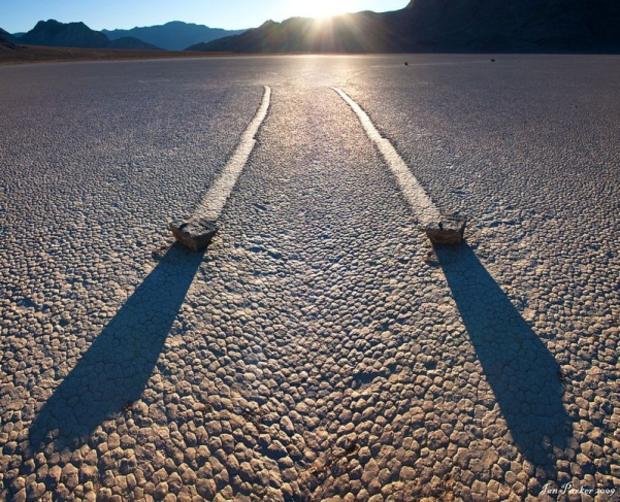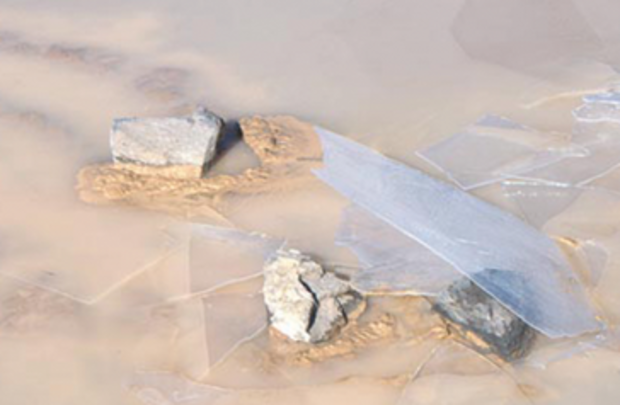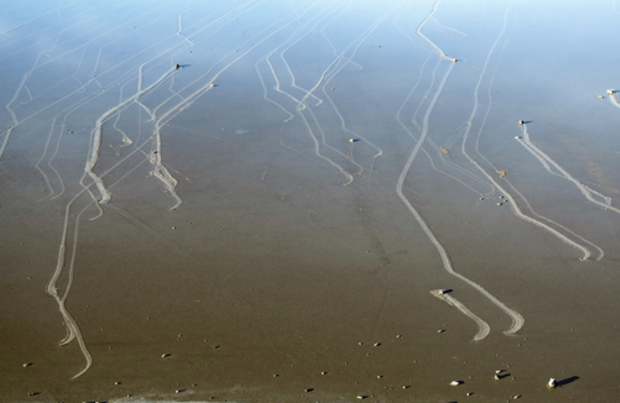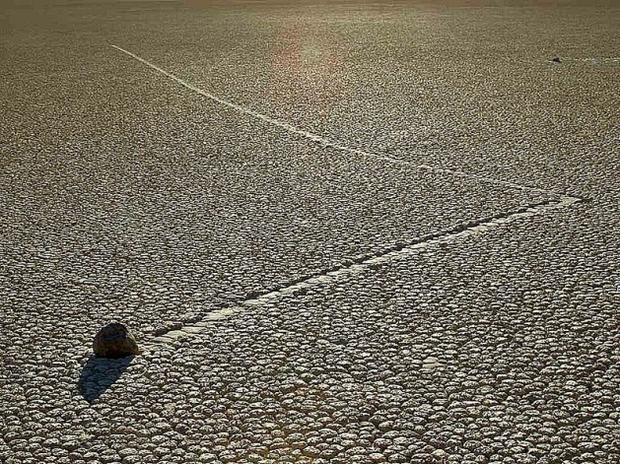Lauren's Science Corner: What Moves The 'Sailing Stones' Of Death Valley?
Since the 1940's, scientists and visitors to Death Valley National Park have marveled at and pondered the mystery of its 'sailing stones.'
Hundreds of rocks from pebble to boulder-size plow their way across the flat surface of the 'Racetrack playa,' engraving trails, some of which are considerable length, in the dry mud landscape.
Rock-carved designs include parallel tracks from numerous rocks, to sharp angle turns, to reverse motion.
Hypotheses of the mechanism attributable to this phenomenon have ranged from earthquakes, to dust devils, to hurricane-force winds, to aliens.
But the answer derives from sunshine and light breezes.
This past winter, a team of scientists outfitted select 'sailing stones' with GPS trackers, and utilized time-lapse photography in an attempt to solve the decades-long mystery.
What the team discovered is that a myriad of meteorological factors must merge for rock motion to commence—the first of which is rain.
Rainwater, and/or snow-melt runoff from surrounding mountains' pools, on the playa surface forms a shallow pond. On a clear, cold, sub-freezing desert night, the pond freezes into a thin sheet of ice over the pooled water below.
A day of sunshine and steady light winds thereafter results in the gradual break-up of the floating ice into individual pieces or panels.
These floating ice panels, driven by a steady breeze and wind-powered water, push upon the stones and cause them to set sail.
During the study, as many as 60 rocks were observed moving in unison! The rocks' forward speed was no faster than a casual cruise, maxing out at 20 feet per minute.
After the ice melts and the shallow pond evaporates, the rocks' travels remain recorded in the dry mud terrain in the form of beautiful, haunting and seemingly mathematical trails.
Some 'sailing stones' logged over 700 feet in multiple moves over a one month period.
Yet, due to the infrequency of rain and snow in Death Valley, years to decades can pass wherein the stones stay stagnant.







